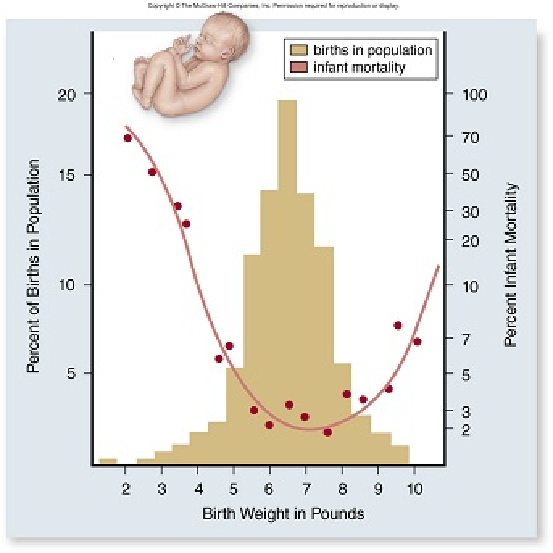In what type of mating system would sexual dimorphism be unlikely?
A. monogamy.
B. polygyny.
C. polygamy.
D. polyandry.
E. polygamy and polyandry.
A. monogamy.
You might also like to view...
In the graph below, which baby characteristics would explain the percent infant mortality curve and any subsequent effects on fitness?

A. The smaller the baby the better the chance of survival.
B. The baby needs to be small enough to survive after birth, but large enough for a safe delivery.
C. The baby needs to be large enough to survive after birth, but small enough for a safe delivery.
D. There is no correlation between birth weight and survival.
E. The larger the baby the better the chance of survival.
Clarify Question
· What is the key concept addressed by the question?
· What type of thinking is required?
· What key words does the question contain and what do they mean?
Gather Content
· What do you already know about fitness? How does it relate to the question?
Consider Possibilities
· What other information is related to the question? Which information is most useful?
Choose Answer
· Given what you now know, what information and/or problem solving approach is most likely to produce the correct answer?
Reflect on Process
· Did your problem-solving process lead you to the correct answer? If not, where did the process break down or lead you astray? How can you revise your approach to produce a more desirable result?
Allergic rhinitis and hives may both respond to antihistamines
Indicate whether this statement is true or false.
When a complement-dependent cytotoxicity test was performed using standard antibodies to HLA A1, A3, B2, and B11, the following microscopic results were obtained: a majority of blue cells were seen with anti-A1, A3, and B11. Based on these results, what is the phenotype of the donor cells?
A) HLA A1, B11 B) HLA B2 only C) HLA A1, A3, B11 D) cannot be determined from these results
Which of the following is/are TRUE regarding "REM sleep"?
a. "dreaming" occurs during REM sleep b. Atonia occurs during REM sleep c. ACh levels are reduced during REM sleep d. all of the above e. a and b